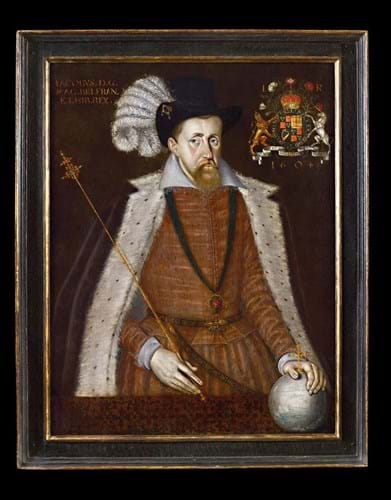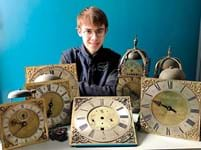
In 1990, dealer Philip Mould discovered a portrait of Henry VIII’s elder brother Prince Arthur hidden inside a larger panel being offered at Sotheby’s. He bought it, sold it – and with the proceeds purchased a house in Kensington.
The painting, executed in 1499 as a tiny marriage portrait between the 15-year-old prince and his wife Katherine of Aragon, is the only recorded contemporary portrait of Arthur and now hangs in Hever Castle, Kent.
Mould says the discovery was a pivotal moment and marked his shift towards early paintings. Thirty years on, the self-styled art sleuth has become one of the field’s best-known dealers, with a particular interest in portraits from the Tudor and Stuart period.
Now, as London emerges from another lockdown, Philip Mould & Company has brought together a selection of Elizabethan and Jacobean portraits for its latest exhibition and catalogue, Love’s Labour’s Found, which runs until May 28 at the gallery in Pall Mall and online.
The firm says the show “sheds new light” on the areas of attribution, subject identification and circles of patronage through 17 paintings and portrait miniatures that have been reassessed using modern technology, including infrared photography and X-ray analysis, and an improved access to manuscript material.
Works by Nicholas Hilliard (c.1547-1619), George Gower (c.1540-96) and William Larkin (c.1580-1619) feature together with unattributed portraits of royal sitters such as Elizabeth I and Henry III of France, and a rare 16th century portrait of a young child in sophisticated Elizabethan dress.
While the majority are loaned from private collections, five works are for sale priced between £15,500 and £350,000.
Pursuit of new finds
“As a company we have been highly active over the last 30 years in the pursuit of undiscovered or overlooked early paintings, and where possible adding to the canon of knowledge – in fact, I like to describe art dealing as the archaeological arm of art history,” says Mould.
“This is the latest in a series of exhibitions spanning the last few decades that seeks to combine the paintings we have had the privilege of handling with the highest quality cataloguing of which we are capable.”
The show provides an opportunity to examine two depictions of Queen Elizabeth I: a surprisingly un-regal portrait from the start of her reign showing the monarch in a simple black costume with an ermine trim and a classic ‘Gloriana’ portrait created more than 30 years later in the 1590s (for sale). Both were painted by unknown artists working in England.

King James VI & I (1566-1625) by an unknown artist, 1604, oil on canvas, 3ft 5in x 2ft 7in (1.03m x 79cm).
Other works on offer include a propagandist portrait of Elizabeth’s successor, King James VI & I, painted not long after his accession to the English throne by an unknown artist in 1604, and William Larkin’s (1580-1619) highly detailed portrait of an unknown gentleman dated to c.1615. It is one of the latest additions to the artist’s oeuvre.
Decourt rarity
Also hanging in the exhibition, no bigger than 57mm tall, is the gallery’s most recent discovery: a portrait miniature of the French king Henri III by Jean Decourt (c.1530-85).
Despite Decourt’s high profile as an artist to the French court (including his role as portraitist to Mary, Queen of Scots), no signed portrait has previously been ascribed to the artist with absolute confidence. The signature Decourt along with the date 1578 was revealed on the reverse when a conservator opened the painting’s frame.
Celebrated miniature painter Nicholas Hilliard (c.1547-1619) is represented by two works: a 1577 portrait probably depicting the 16th century French poet Pierre de Ronsard and another of a gentleman wearing a black doublet and white lace collar against a red curtain background. The latter is one of the first occasions Hilliard used a red background painted to simulate velvet, rather than his traditional vivid blue backdrop.

Thomas Fones by Isaac Oliver (c.1565-1617), c.1605, watercolour on vellum, laid down on pasteboard in later gilt-metal frame, oval, 2in (5cm) high.
Also featuring is a previously unrecorded miniature by Isaac Oliver (c.1565-1617), Hilliard’s pupil and later his leading competitor, depicting the wealthy English merchant Thomas Fones in a black embroidered doublet and wide lace-edged standing collar.
Fones, who was twice mayor of Plymouth in 1610 and 1619, would probably have witnessed the departure of the Pilgrim Fathers aboard the Mayflower as it set sail for the New World.














